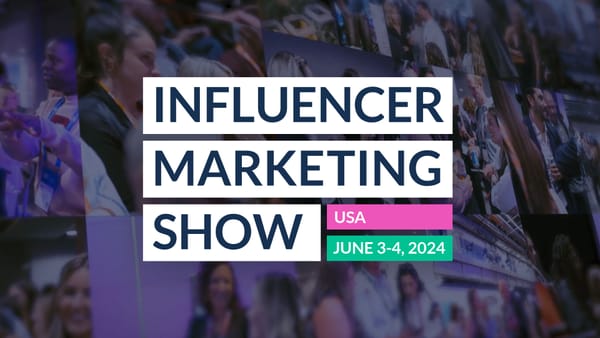With 75% of the world’s population above the age of 13 using social media, it is now widely accepted that influencer marketing is a great tool for brands to authentically connect with their audiences. Yet allowing an influencer to speak on the behalf of a brand is not without risk.
Almost simultaneous to the growth of social media influencers are the scandals, controversy, and shadow tactics that have unfortunately come to tarnish the industry. Whilst working with influencers might be a clear path to shaping the online reputation of a brand, and in turn boosting its recognition, engagement and sales, associating with the wrong creator can be detrimental to its image. According to recent data, this is top of mind for most marketing professionals, with 76% of them recognising brand safety as a concern in influencer marketing.
Although major incidents remain rare, brands must do their due diligence and be selective when partnering with any influencer. Here are the vital considerations marketers should consider to ensure their influencer marketing strategies do not turn sour.
An influencer’s past digital life matters!
According to recent findings, UK consumers would boycott purchasing from a favourite brand that advertised near hate speech (89%), malware (92%), illegal content (89%), or terrorist recruiting materials (93%). It is therefore clear that brands cannot take even the slightest risk in being associated with any influencers posting controversial content online.
With brand safety being a concern for most marketers, most will stay away from well-known controversial influencers. However, the risk often lies with influencers who seem to have a good reputation on the surface but whose “digital dirt” is buried in their social media feeds.
As most of us know, anything posted on the internet will exist forever and can resurface at any time, sometimes years after first being published. This is true for everyone, but the implications can be greater for influencers and the brands they are associated with. Recently, Elle Darby and Tinx were the latest examples of influencers embroiled in scandals as a result of historic controversial posts and tweets resurfacing years down the line, leading to public scrutiny of the influencers, and audiences questioning their authenticity.
According to exclusive data from HypeAuditor, Elle Darby lost 24,000 followers in just one day, on 5th January 2022, when the offensive tweets she wrote as a teenager resurfaced. In total, Elle lost a substantial 130,000 followers on Instagram between the months of December 2021 and June 2022. Despite resuming her activity on the social media platform in May, after a five-month hiatus, Elle regained just 6,700 followers by the end of June. Before the tweets resurfaced, Elle was known for working with or regularly mentioning high street brands, including Zara, Missguided and Abercrombie & Fitch, amongst others in her posts. In the case of Tinx, she lost 6,500 followers in just three days following a similar scandal erupting in Spring, this year.
This highlights that audiences care and pay attention to what influencers say online, no matter when. Any time of social media collaboration between a brand and influencer has positives for both parties, but if marketers have not done their due diligence before agreeing to collaboration to evaluate the influencers’ content, it is highly likely that someone else will at the expense of the brand. The process of identifying influencer profiles by evaluating their content style, looking out for any “digital dirt”, checking previous collaborations with other brands and researching them in the press is key to ensuring successful partnerships.
Influencers’ ethos vs popularity
Values of authenticity and transparency have never been so important for consumers. As a result, it’s vital that brands partner with genuine and authentic influencers, going beyond metrics showcasing their popularity online. Although follower count and engagement rates – such as likes, comments and shares – are important, understanding how well an influencer’s ethos aligns with a brand’s values is crucial.
At a time when retaining customers is becoming more challenging than ever amid an unfavourable economic outlook, and growing consumer caution around spending, marketers must ensure the content creators they are partnering with will become true advocates for their brand, encouraging loyalty among their audiences.
As the influencer market matures, technology has developed to the point where marketers can have access to a wide variety of insights that can help them identify influencers who will connect authentically with an audience, and steer clear of those who engage in non-compliant behaviours.
They can, for instance, examine an influencer’s profile looking for any controversial posts previously published which may be considered toxic, negative, offensive, too political or related to adult content. Depending on what the brands stand for, marketers can also look out for content in relation to religion, alcohol, or even pranks that may be badly interpreted by the targeted audience.
By staying loyal to their brand’s values, and by relying on the right set of tools, marketers can determine whether an influencer is fit to represent a particular brand before they decide to work with them, ensuring their profile will resonate with the brand’s audience.
As a result, when deciding on which influencer would be best to partner with, it is important to remember to always look past the surface level. First impressions mean a lot, but to make well-informed judgments that will benefit and reflect the brand’s objectives and values in the future, it is important to delve deeper before introducing an influencer as a brand representative.









